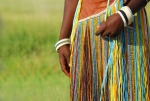TANZANIA TANZANIA LAKE MANYARA NATIONAL PARK
Lake Manyara National Park
Established in 1960, Lake Manyara National Park extends over 330 sq km of the northern Rift Valley floor southwest of Arusha. Its centrepiece is Lake Manyara, a fluctuating body of alkaline water set within a shallow sump at the base of the Rift Valley. To the southeast, a scattering of extinct volcanoes rise in splendid isolation from the open plains of the Maasai Steppes. To the west, the lake is hemmed in by the 600m-high golden-brown rift escarpment alluded to in its name – an emanyara being the spiky protective hedge grown around a Maasai boma.
Manyara’s dramatic setting was once extolled by Ernest Hemingway as “the loveliest that I had seen in Africa” and by documentary maker Colin Willock as “the most luxuriant place in the whole East African Rift”. Today, however, the park is frequently bypassed by safarigoers in their enthusiasm to reach the world-renowned Serengeti and Ngorongoro. This is a shame: not only does Manyara make a convenient first stop out of Arusha, but its remarkable habitat diversity compressed within a relatively small area ensures that it offers a virtual microcosm of the Tanzanian safari experience.
Vegetation and habitats
- Lake Manyara accounts for two-thirds of the park’s surface when full, but shrinks to near invisibility in periods of drought. A steady feed of underground springs ensures it never empties entirely.
- Dominated by evergreen fig and mahogany trees, the jungle-like groundwater forest around the entrance gate is the only accessible habitat of its type in East Africa.
- Other terrestrial habitats include the grassy lake floodplain, the rocky rift valley escarpment, and the ribbon of dense acacia woodland that divides them.
Wildlife
- Manyara’s famous tree-climbing lions frequently ascend into the acacia canopy, probably to escape the attention of biting insects
- Acacia woodland is also the favoured habitat of Manyara’s elephants, which are unusually relaxed and often carry impressive tusks.
- The groundwater forest is superb for observing primate interaction: hundred-strong baboon troops lounge nonchalantly along the roadside, while shyer blue monkey s hide in the foliage.
- The grassy floodplain hosts large herds of buffalo, wildebeest, zebra and giraffe, the latter often so dark as to appear to black from a distance.
- The celebrated hippo pool is not only inhabited by hippos, but also attracts waterbirds such as herons, storks, kingfishers and the iconic fish eagle.
- Antelope abound, but do look out for klipspringer pairs silhouetted on the cliffs, and the tiny Kirk’s dik-dik with its trademark twitchy nose.
- It’s a perfect introduction to Tanzania’s birdlife, with 400-plus species recorded, including 50 birds of prey, raucous forest hornbills, pink-hued flamingos and flotillas of pelicans.
Activities
- The limited road circuit can be covered in 3-4 hours, but animals are constantly on the move, so it’s worth a second go. Most safari companies schedule an afternoon visit, but morning is better – fewer other vehicle and more wildlife activity.
- Manyara lies in the heart of Maasai country and a visit to a boma inhabited by these charismatic red-robed pastoralists is unforgettable.
- Mountain bike tours and escarpment forest walks can be undertaken outside the park, and canoe safaris are offered when water levels are suitable.
Getting there
- Access is good all year through, but the dry season (July-October) is best for large mammals, and the wet season (November-June) for birds.
- Road safaris from Arusha take 1-2 hours to reach the entrance gate. The access road is surfaced in its entirety but internal roads may require 4x4 and/or good clearance.
- Charter and scheduled flights from Arusha, Ngorongoro and Serengeti land at Manyara airstrip on the escarpment 10 minutes drive from the park.
- The gateway village of Mto Wa Mbu is accessible by bus, but you’d need to rent a vehicle to enter the park.
Where to stay
- A solitary luxury tented camp, one hour’s drive from the entrance gate, is the only accommodation within the national park
- A string of tourist-class lodges and tented camps run along the Rift Valley escarpment overlooking the lake, 10-15 minutes drive from the entrance gate.
- Budget guesthouses and campsites are dotted in and around Mto wa Mbu, while simple self-catering bandas and campsites are available in a forest patch at the entrance gate.
Nearby places of interest
A spine-jarring 265km back-road leads northward from Manyara to the northern Serengeti via some of East Africa’s most remote and least known cultural and scenic attractions. These include:
- the extensive terraced walls and abandoned irrigation ditches of the Engaruka Ruins, all that remains of a mediaeval city that housed 30,000 people in its pomp
- the hyper-saline Lake Natron, whose primordial caustic shallows form the region’s most important breeding ground for flamingos.
- East Africa’s most active volcano, Ol Doinyo Lengai - Maasai ‘Mountain of God’ – which towers to an altitude of 2,878m above Natron’s southern shore, steep black slopes dusted with ashen evidence of its most recent eruption, in 1993.
Checklist of conspicuous and noteworthy mammals: lion, leopard, spotted hyena, banded mongoose, blue wildebeest, Defassa waterbuck, impala, Thomson’s gazelle, Grant’s gazelle, bushbuck, common duiker, Kirk’s dik-dik, klipspringer, African elephant, African buffalo, common zebra, hippo, warthog, Maasai giraffe, olive baboon, vervet monkey, blue monkey, rock hyrax.







